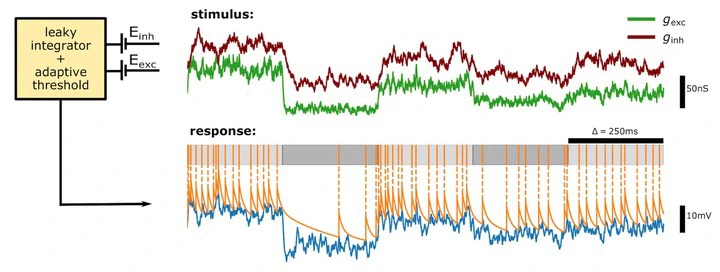
Abstract
In this paper we investigate the rate coding capabilities of neurons whose input signal are alterations of the base state of balanced inhibitory and excitatory synaptic currents. We con- sider different regimes of excitation-inhibition relationship and an established conductance- based leaky integrator model with adaptive threshold and parameter sets recreating biologi- cally relevant spiking regimes. We find that given mean post-synaptic firing rate, counter- intuitively, increased ratio of inhibition to excitation generally leads to higher signal to noise ratio (SNR). On the other hand, the inhibitory input significantly reduces the dynamic coding range of the neuron. We quantify the joint effect of SNR and dynamic coding range by com- puting the metabolic efficiency—the maximal amount of information per one ATP molecule expended (in bits/ATP). Moreover, by calculating the metabolic efficiency we are able to pre- dict the shapes of the post-synaptic firing rate histograms that may be tested on experimen- tal data. Likewise, optimal stimulus input distributions are predicted, however, we show that the optimum can essentially be reached with a broad range of input distributions. Finally, we examine which parameters of the used neuronal model are the most important for the meta- bolically efficient information transfer.